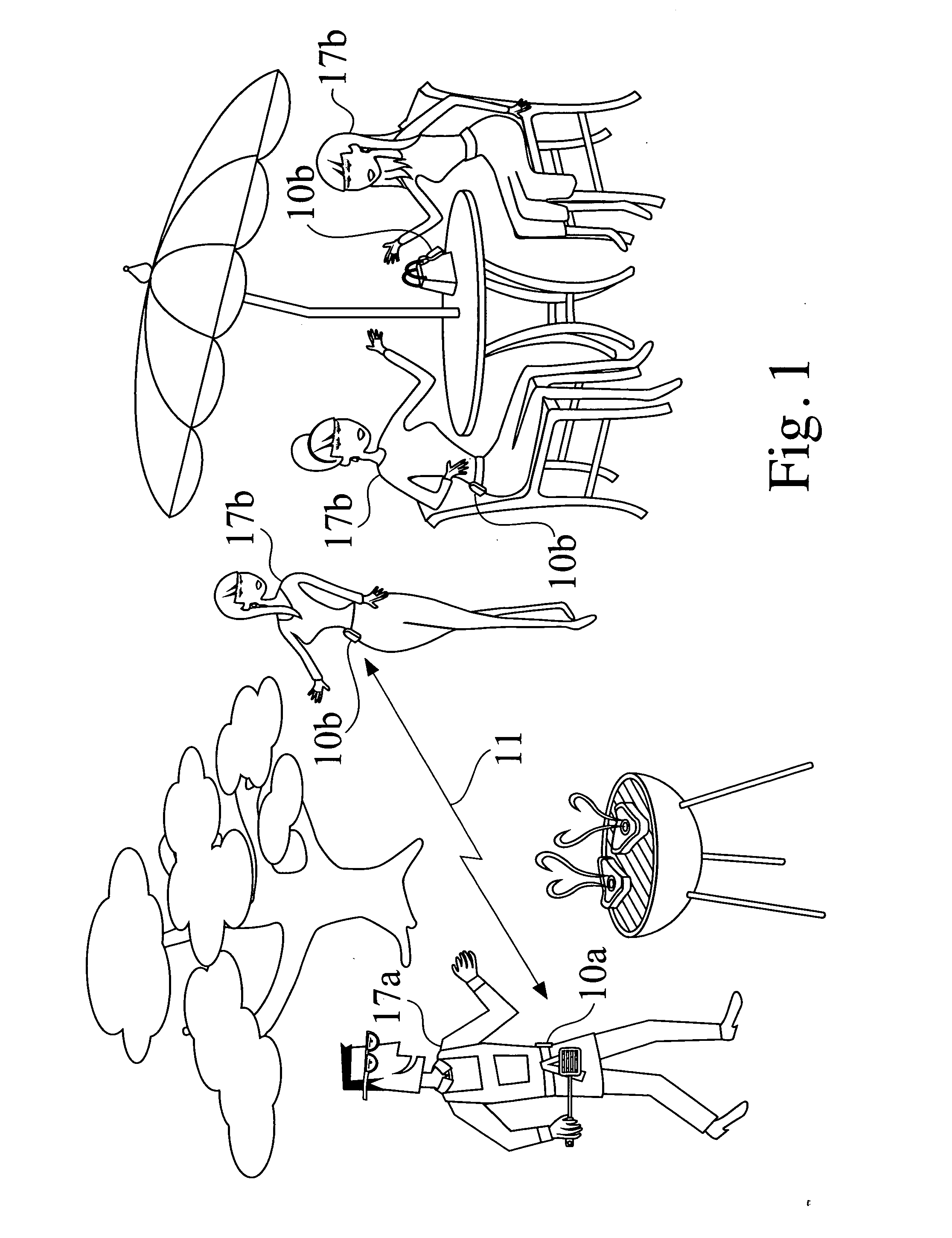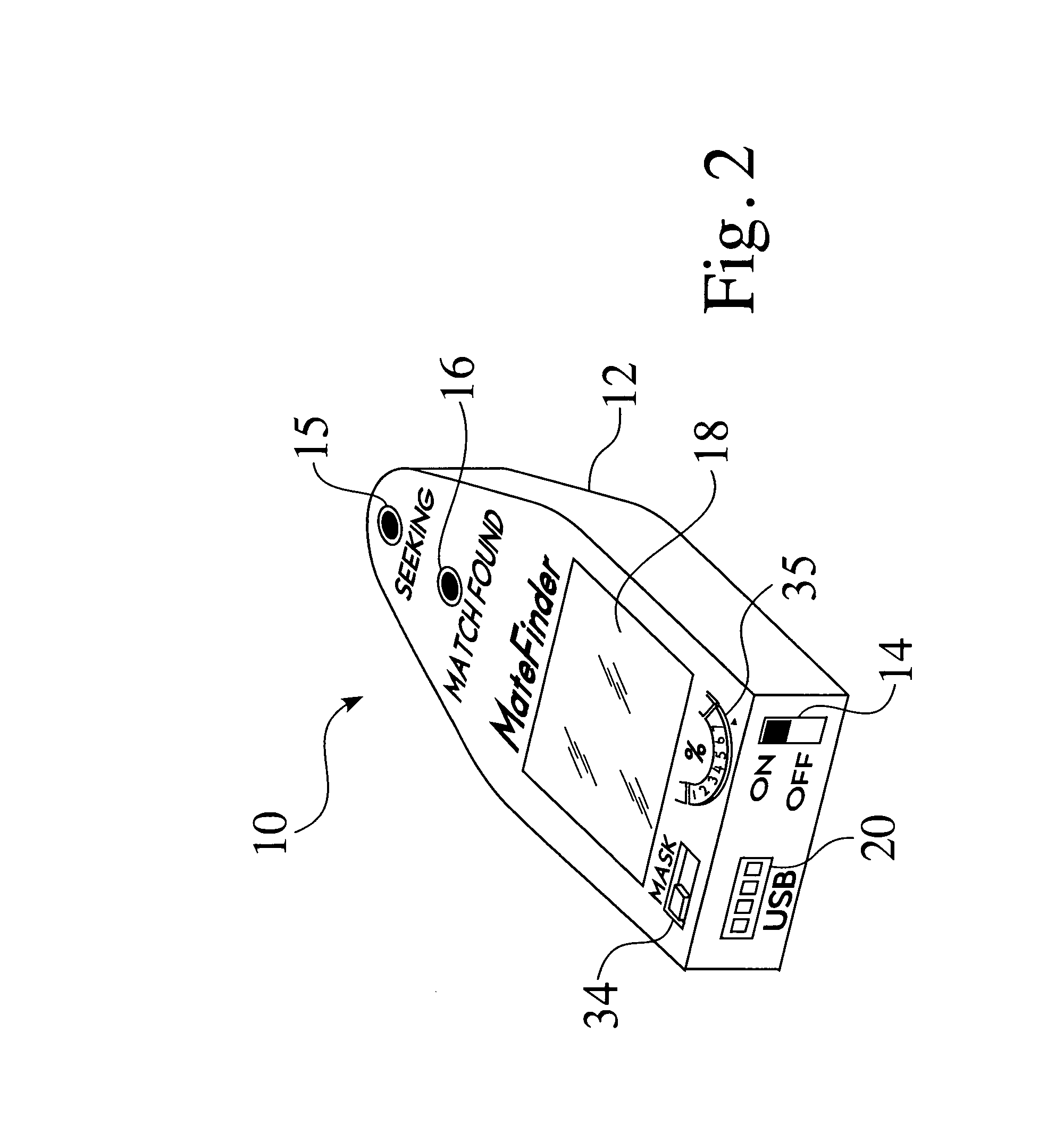Personal radio location system
a radio location and personal technology, applied in the field of personal radio location systems, can solve the problems of pheromones being detrimental to fitness, human and some apes have poor smell, and have lost the ability to detect and analyze mhc,
- Summary
- Abstract
- Description
- Claims
- Application Information
AI Technical Summary
Benefits of technology
Problems solved by technology
Method used
Image
Examples
Embodiment Construction
I. A Preferred Embodiment of the Invention
[0030] The present invention comprises methods and apparatus for finding someone or something with specific attributes using a radio device. In one embodiment of the invention, a MateFinder™10, which resembles a pager, may be used by a man or a woman to find a match.
[0031]FIG. 1 is a representation of a private party. One of the hopes of some of the men and women who attend the party is that of finding a friend or a mate. In accordance with one embodiment of the present invention, a man 17a is shown wearing a MateFinder™10a clipped to his belt. A group of women 17b standing around or sitting at a table also have MateFinders 10b, which are clipped to their belts or purses or are concealed in their clothing. In general, the MateFinder™10 is an electronic device which uses a radio to help find someone or something which fits a predetermined description or some preselected criteria. In this Specification and in the Claims that follow, the MateF...
PUM
 Login to View More
Login to View More Abstract
Description
Claims
Application Information
 Login to View More
Login to View More - R&D
- Intellectual Property
- Life Sciences
- Materials
- Tech Scout
- Unparalleled Data Quality
- Higher Quality Content
- 60% Fewer Hallucinations
Browse by: Latest US Patents, China's latest patents, Technical Efficacy Thesaurus, Application Domain, Technology Topic, Popular Technical Reports.
© 2025 PatSnap. All rights reserved.Legal|Privacy policy|Modern Slavery Act Transparency Statement|Sitemap|About US| Contact US: help@patsnap.com



